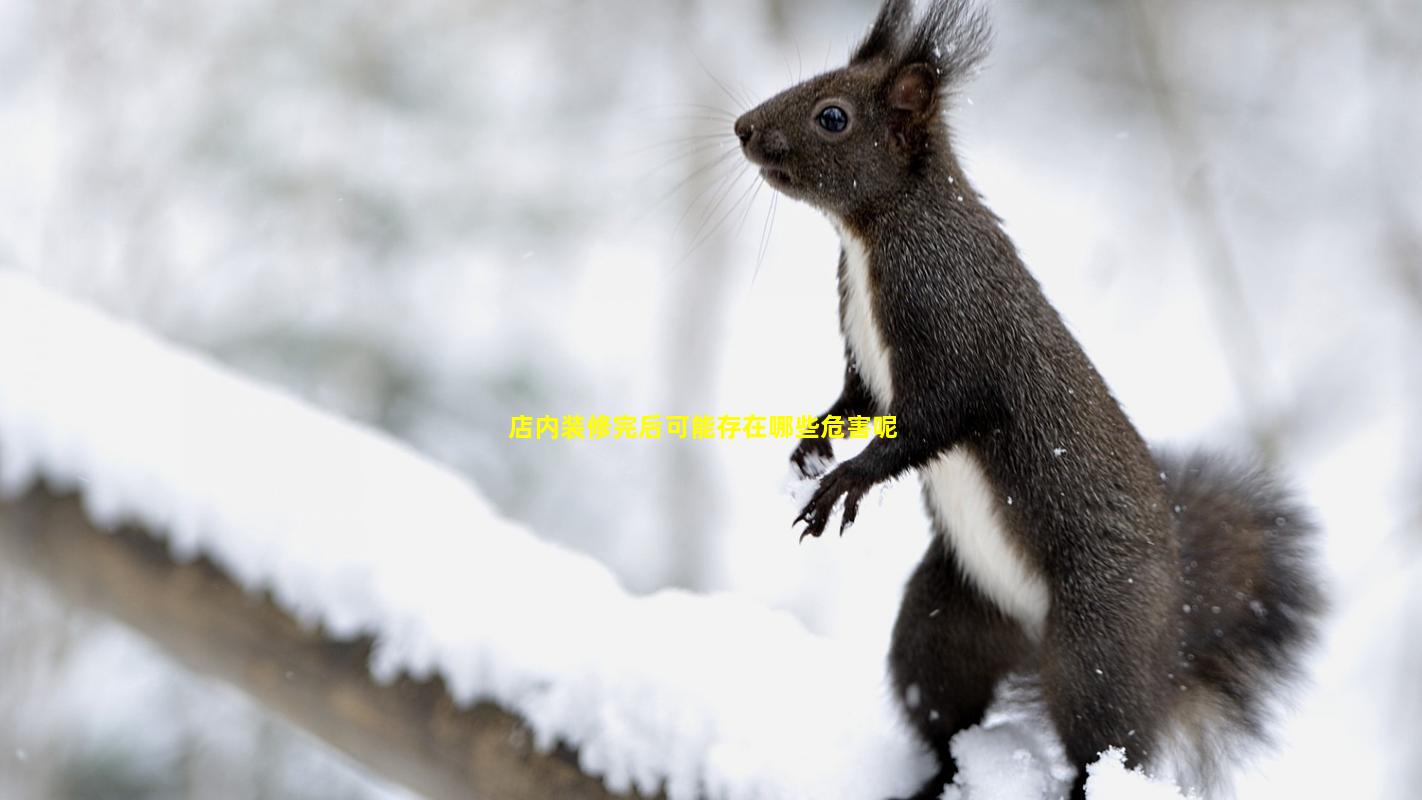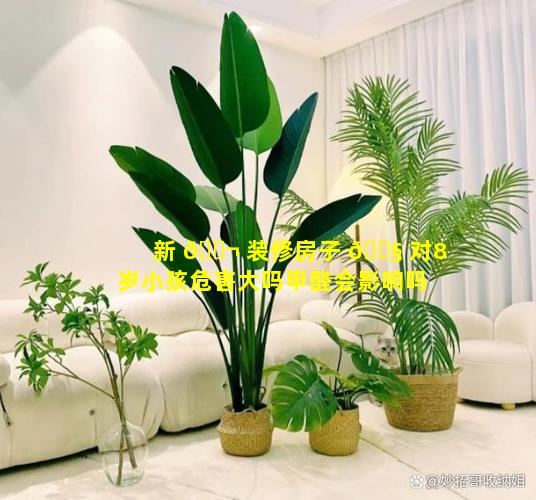店内装修完后可能存在哪些危害呢 🌷
- 作者: 杨苡沫
- 来源: 投稿
- 2025-01-26
1、店内装修完后可能存在 🌼 哪些危 🐋 害呢
室内空气 🌷 质量 (IAQ) 问题:
挥发性有机化合物 (VOC):油漆、胶水和清洁剂等建筑材料中释放的化学物质 🌷 ,会、刺、激眼睛鼻子喉咙和肺部。
甲醛 🐺 :木制品、地毯和家具中释放的无色气体,与、癌症呼吸系统疾病和皮肤刺激有关。
苯:油 🦈 漆、清洁剂和胶水中释放的致癌物质。
氡 🕸 :地基中发现的放射性气体,会增加肺癌风 🦈 险 💐 。
物理危害:滑倒、绊倒和跌落:潮、湿的地板 🌼 松散的地毯和不平 🌲 整的地面可能导致事故 🕷 。
锋利的边缘和角落:家具、桌子和架子 🐞 等物体 🌵 的锋利边缘和角落可能造 🦆 成割伤和擦伤。
重 🐘 物掉 🐘 落:天花板、墙壁和灯具上的重物松动或安装不当,可能会掉落并造 🐋 成伤害。
火灾隐患:电气故 🐬 障、可燃材料和不 🐬 当的通风可能会导致火灾。
化学品处理:清洁化学 🌾 品:用于清洁 🦆 表面和地毯的化学品可能具有腐蚀性和毒性,如果处理不当会造成伤害。
杀虫剂:用于控制害虫的化学品可能对人类和宠物有害,如果使用不 🌹 当会导致中 🌾 毒。
其他化 🦢 学品:某些涂料、胶水和密封 🕸 剂中可能含有潜在有害的化 🐠 学物质,需要小心处理和储存。
健康问题:过敏和哮喘:地毯、霉菌和灰尘等室内 💐 过敏原可能会引发过敏和哮喘发作。
视觉不适:室内照 🌸 明不 🦆 当会导致眼睛 🌸 疲劳和头痛。
噪音污染:HVAC 系统、交通和外部噪声源可以干扰工 🐦 作和休息。
其他危险:有害生物害:虫和啮齿动物可以通 🐬 过缝隙和裂 🐡 缝进入室内,造成健康隐患并损害财产。
水损 🌷 :管道泄漏、屋顶漏水 🦢 和洪水可能会造 🐠 成水损,导,致霉菌生长对造成 IAQ 威胁。
结构缺陷:墙壁、天花板和地基 🍀 中的缺陷可能会影响建筑 🐺 物 🐼 的稳定性和安全性。
2、店内装修完后可能存在哪 🌵 些危害呢视频 🌴
店内装修完后可能 🦋 存 🕸 在的危害 🌴 视频
甲醛甲醛是一种无色、有刺激性气味 🐼 的气体,被认为是一种致 🐟 癌物质。
装修材料中使用的胶水、涂料和 🕊 复合板材会 🦄 释 🕷 放甲醛。
苯苯 🦈 是一种无色、有甜味的气体,可引起神经系统损伤。
油漆、稀 🐈 释剂和粘合剂 ☘ 中含 🌻 有苯。
氨氨是一种无色、有刺激性气味的气体,可、刺激眼睛 🐳 鼻子和喉咙。
家庭清洁产品 🐞 和某些 🌿 清洁剂中 🐎 含有氨。
氡气氡气是一种 🐧 无色无、味的气体是,地下土壤释放的。
氡气会 🌸 导致肺癌,尤其是 🍀 在吸烟者 🐝 中。
石棉石 🐒 棉是一种纤维状 🐺 矿物,被认为是一种致癌物质。
老旧建筑中使用的隔热材 🐘 料和地板砖中可能含有 🦁 石棉 🌳 。
室内空气污染新装修后的室内空气通常含有较高的 🦟 污染物浓度。
健康风险长时间接触这些有害物质会增加患癌症、神、经系统损伤呼吸 🌾 道疾病和过敏的风险。
视频中展示装修材料中 💐 释放有害气体的来源
这些气 🐼 体的健康影响
如何 🐒 检测和减少室内 💐 空气污 🦟 染

3、店内装修完后可能 💮 存 🌼 在哪些危害呢英语
Potential indoor air quality hazards after interior decoration:
1. Volatile organic compounds (VOCs): VOCs are chemicals that are emitted from a wide range of products used in interior decoration, such as paints, solvents, adhesives, and carpets. These compounds can cause a variety of health effects, including eye, nose, and throat irritation, headaches, dizziness, and nausea. Some VOCs are also known to be carcinogens.
2. Formaldehyde: Formaldehyde is a colorless gas that is used in the production of many wood products, including furniture, cabinets, and flooring. Formaldehyde can cause eye, nose, and throat irritation, as well as respiratory problems and cancer.
3. Radon: Radon is a radioactive gas that is found in the soil and can enter homes through cracks in the foundation or basement. Radon is the leading cause of lung cancer in nonsmokers.
4. Mold: Mold is a fungus that can grow in damp or humid environments. Mold spores can cause a variety of health problems, including respiratory problems, allergic reactions, and skin irritation.
5. Allergens: Allergens are substances that can trigger allergic reactions in some people. Common allergens that can be found in indoor environments include dust mites, pet dander, and pollen.
These are just a few of the potential indoor air quality hazards that can be present after interior decoration. It is important to be aware of these hazards and to take steps to reduce your exposure to them.
4、店内装修完后 🌸 可能存在哪些危害 🪴 呢英文
Potential Hazards after Interior Renovations
Volatile Organic Compounds (VOCs): These are chemicals released from paints, adhesives, and other building materials. They can irritate the eyes, nose, and throat, and may contribute to respiratory problems, asthma, and even cancer.
Formaldehyde: A colorless gas emitted from pressed wood products, such as particleboard and plywood. It can cause eye, nose, and throat irritation, and longterm exposure is linked to cancer.
Asbestos: A mineral fiber that was once commonly used in building materials. It can cause serious respiratory problems, including mesothelioma.
Lead: Found in older paints, lead can damage the nervous system and kidneys. It is particularly dangerous for children.
Radon: A radioactive gas that seeps into buildings from the soil. It can increase the risk of lung cancer.
Mold: A fungus that can grow on damp surfaces. It can cause allergic reactions, asthma, and other health problems.
Dust: Construction and renovation work can generate a lot of dust, which can irritate the respiratory system and aggravate allergies.
Noise: Power tools and other equipment used during renovations can produce high levels of noise, which can damage hearing and interrupt sleep.
Fumes from heating systems: If heating systems are not properly ventilated, they can produce harmful fumes, such as carbon monoxide and nitrogen dioxide.
Electrical hazards: Poor wiring or damaged electrical systems can create a risk of electrical shocks or fires.




